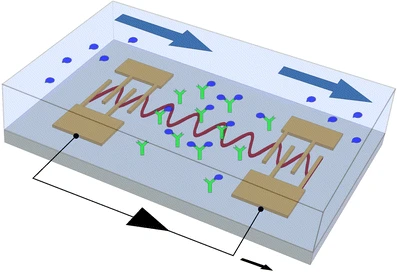Parkinson's disease (PD) is a neurodegenerative disorder characterized by inclusions of aggregated α-synuclein (α-SYN) in the cytoplasmic region of neurons. Clinical evidence suggests that stimulation of pro-inflammatory cytokines leads to neuroinflammation in the affected brain regions.
The JAK-STAT signaling pathway is a chain of interactions between proteins in a cell, and is involved in processes such as immunity, cell division, cell death and tumour formation. Since the JAK-STAT pathway plays a major role in many fundamental processes, such as apoptosis and inflammation, dysfunctional proteins in the pathway may lead to a number of diseases. Yet it is rarely associated by scientists to Parkinson's disease. This review take the opposite point of view: The JAK-STAT signaling pathway is involved in Parkinson's disease.
The JAK-STAT pathway communicates information from chemical signals outside of a cell to the cell nucleus, resulting in the activation of genes through a process called transcription. There are three key parts of JAK-STAT signalling:
- Janus kinases (JAKs),
- signal transducer and activator of transcription proteins (STATs),
- receptors (which bind the chemical signals).
Upon neuroinflammation, the Janus Kinase/Signal Transducers and Activators of Transcription (JAK/STAT) signaling pathway, and other transcription factors such as nuclear factor κB (NF-κB), NOD-, LRR- and pyrin domain-containing protein 3 (NLRP3), mammalian target of rapamycin (mTOR), and toll-like receptors (TLRs) are upregulated and induce the microglial activation, contributing to Parkinson's disease via dopaminergic neuron autophagy.
Aberrant activation or phosphorylation of the components of JAK/STAT signaling pathway has been implicated in increased transcription of the inflammation-associated genes and many neurodegenerative disorders such as Parkinson's disease.
Interferon gamma (IFN-γ), and interleukine (IL)-6 are two of the most potent activators of the JAK/STAT pathway, and it was shown to be elevated in PD.
Stimulation of microglial cell with aggregated α-SYN results in production of nitric oxide (NO), tumor necrosis factor (TNF)-α, and IL-1β in PD.
Dysregulation of the JAK/STAT in PD and its involvement in various inflammatory pathways make it a promising PD therapy approach. So far, a variety of synthetic or natural small-molecule JAK inhibitors (Jakinibs) have been found promising in managing a spectrum of ailments, many of which are in preclinical research or clinical trials.
Janus kinase inhibitors, also known as JAK inhibitors or jakinibs, are a type of medication that functions by inhibiting the activity of one or more of the Janus kinase family of enzymes (JAK1, JAK2, JAK3, TYK2), thereby interfering with the JAK-STAT signaling pathway.
These inhibitors have therapeutic application in the treatment of cancer and inflammatory diseases such as rheumatoid arthritis. JAK3 inhibitors are attractive as a possible treatment of various autoimmune diseases since its functions is mainly restricted to lymphocytes.
Herein, scientists provided a perspective on the function of the JAK/STAT signaling pathway in Parkinson's disease progression and gathered data that describe the rationale evidence on the potential application of Jakinibs to improve neuroinflammation in Parkinson's disease.


